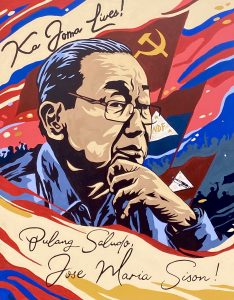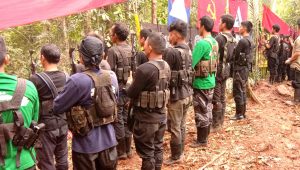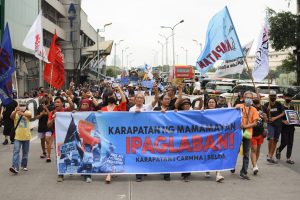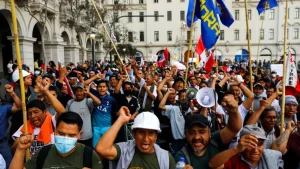US economic hegemony in Asia-Pacific


Strengthening its economic hegemony over its allies and colonies in the Asia-Pacific is part and parcel of the militarist Indo-Pacific Strategy of US imperialism. Towards this, US Pres. Joseph Biden launched the Indo-Pacific Economic Framework for Prosperity (IPEF) before the meeting of the Quadrilateral Security Dialogue (US, Japan, Australia, India) in Japan last May. Economic officials from its 14 member countries held their first meeting in Australia on December 10-15.
IPEF’s overt goal is to counter the expansion of imperialist China in the region. Apart from India and the US, all IPEF members are also members of the Regional Comprehensive Economic Partnership (RCEP) and have strong trade relations with China. The US intends to restrict these relations and rob China of its advantages in global trade, especially in semiconductor manufacturing. At the same time, it wants to tighten its control over the resources, markets and areas where it can dump its surplus capital in the Asia-Pacific.
Although it is being peddled as a “partnership” (or cooperation), the IPEF is no different from the US-abandoned Trans-Pacific Partnership and other multilateral agreements that destroyed underdeveloped and semicolonial countries and stunted their development. This will push countries to open up their economies in exchange for limited capital. It is also an additional instrument of the US to impose rules and processes favorable to American companies and investments in the regional market while keeping its own economy closed.
Many countries complain of the IPEF terms and US initiatives that blatantly violate their economic sovereignty. Recently, the US announced new restrictions on American companies exporting material related to the production of computer chips. It prompted South Korea and Singapore to impose similar restrictions. In this area (trade), Indonesia, Thailand and India have already warned that they will not allow the IPEF to be used to “isolate” a country. They flatly refused to sacrifice their relationship with China.
Total subservience of the Marcos regime
Unlike countries that promote economic independence, the puppet Marcos government hurried to be part of the IPEF. The regime’s policy of “opening wide” of the local economy for foreign plunder in exchange of meager capital and American market share is in line with this framework.
The US intends to put up a local office of the US Trade and Development Agency (USTDA) in Metro Manila to strengthen its control over policies and economic projects in the Asia-Pacific. In the Philippines, this agency will help American companies corner contracts in the recently opened public utility sector, telecommunications, infrastructure and energy projects and the expansion of mines and commercial plantations.
Among US funded projects are two disastrous projects that its vice president, Kamala Harris, even boasted about when she visited the country. One of them is the geothermal project in Mt. Apo in North Cotabato where the USTDA partnered with the Energy Development Corporation (EDC) of the Aboitiz family. Another project is with Eramen Minerals Inc. in putting up a nickel and cobalt processing facility in Zambales.
Both these projects have been subject to the long and bloody resistance of farmers and Lumads. These have caused dislocation of farmers and Lumads and damage to the environment. EDC’s geothermal plants were illegally built on Manobo ancestral land in Mt. Apo, which is a protected area. The operations of EMI were once shut down by the Department of Environment and Natural Resources due to its harmful effects on the community. Both projects are contrary to the US rhetoric of “development” and environmental protection that are part of “combating climate change.”











